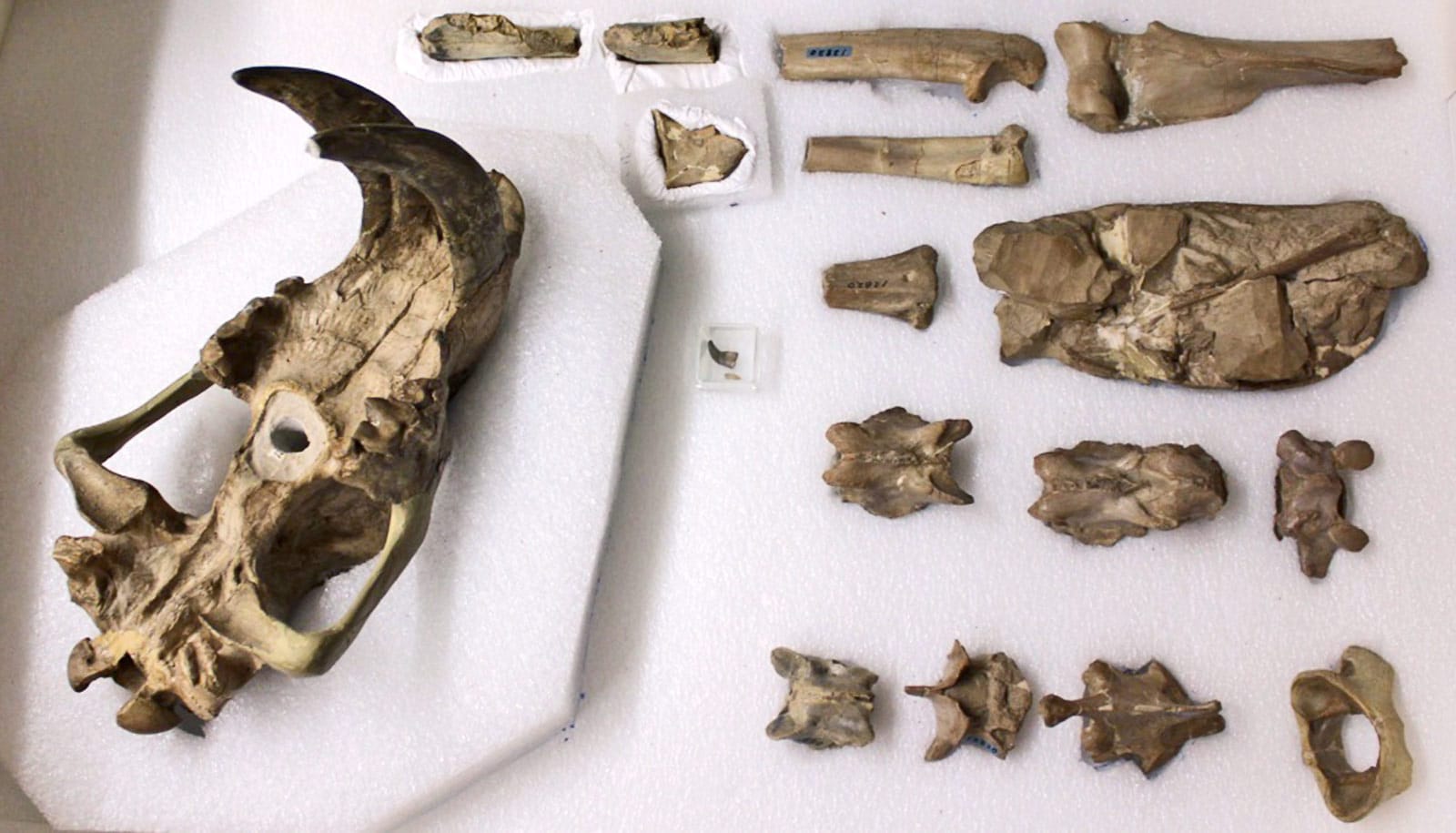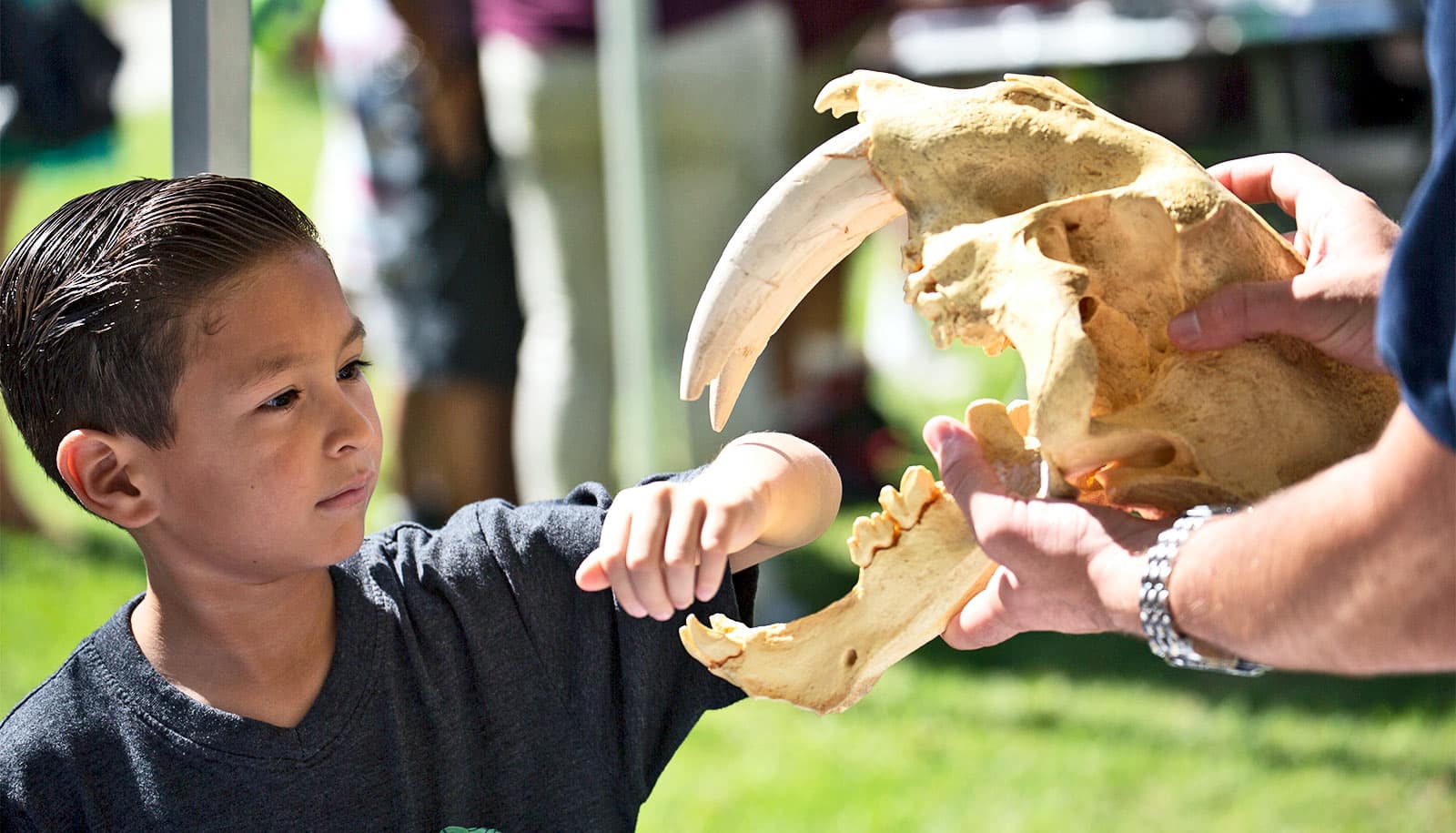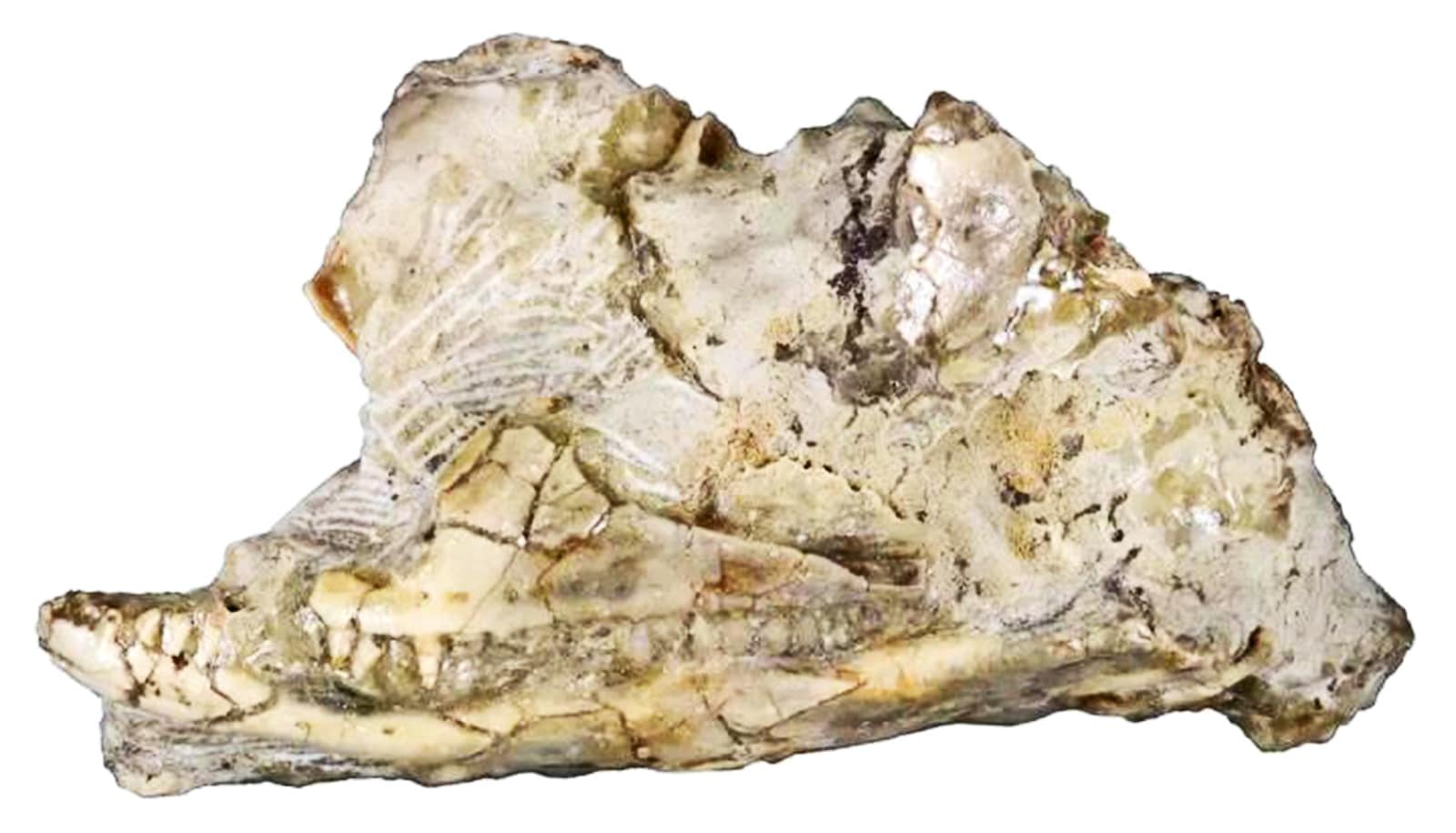
Saber-tooth bones. (Credit: U. Oregon)
New saber-toothed creature turns up in museum
A new kind of new saber-toothed predator was hiding in plain sight: at the Smithsonian National Museum of Natural History.
A new kind of new saber-toothed predator was hiding in plain sight.
The fossil specimen, unearthed in Wyoming, was on display for decades at the Smithsonian National Museum of Natural History in Washington, DC. When it went off-exhibit in 2017 during a museum renovation, University of Oregon graduate student Paul Barrett finally got a closer look.
The animal had long, sharp, saber-shaped teeth, but it was far bigger than the other saber-toothed animals that existed around the same time, about 33 million years ago. And the way its skull was structured was unusual, too. The carnivorous creature was a clear outlier, earning it a new species name: Eusmilus adelos . Barrett describes the species in a paper in Scientific Reports .
“For its time period, it was anomalously large,” Barrett says, about the size of a modern-day lion .
E. adelos is part of the nimravids, a group of mammals with cat-like body types that lived roughly 40 to 7 million years ago. Most saber-toothed nimravids were comparable in size to bobcats or cougars. This one was closer in size to Smilodon , the genus of well-known saber-toothed tigers that roamed millions of years later, long after nimravids went extinct.
The new finding also prompted Barrett to rethink the evolution of nimravids.
“Historically, our ideas of how nimravids evolved is that they got increasingly more saber-toothed until they went extinct,” Barrett says. Those analyses focused mostly on the distinctive size and shape of nimravids’ teeth.
Barrett considered many other features of the animals too, like the size and shape of the limbs and spine. He also factored in details from the skull, such as passages for nerves, veins, and arteries. With those new details, a more complex story emerged.
Instead of simply becoming more saber-toothed over time, he proposed, nimravids split into two groups early on. One of those groups evolved saber teeth. The other branched out a variety of species that look more similar to today’s cats.
Millions of years later, a similar pattern reoccurred in the family that includes modern cats, Barrett says. The saber-toothed lineage of Smilodon died out, but a sister group with other kinds of teeth diversified into the set of animals that eventually became the cats we know today.
Nimravids are “converging on what we see in cats today, but tens of millions of years earlier,” he says.
Source: University of Oregon
The post New saber-toothed creature turns up in museum appeared first on Futurity .
Share this article:
This article uses material from the Futurity article, and is licenced under a CC BY-SA 4.0 International License. Images, videos and audio are available under their respective licenses.
Related Articles:
New saber-toothed species is one of the largest cats in history
May 11, 2021 • futurity‘Perplexing’ extinct lizard leads to evolution mystery
Nov. 12, 2020 • futurityLinks/images:
- https://www.futurity.org/new-saber-toothed-cat-species-2563582/
- https://doi.org/10.1038/s41598-021-00521-1
- https://www.futurity.org/man-eating-tsavo-lions-1406152-2/
- https://around.uoregon.edu/content/grad-student-finds-new-saber-toothed-species-museum?utm_source=UOnews
- https://www.futurity.org/saber-toothed-predator-fossil-nimravids-2668752-2/
- https://www.futurity.org


